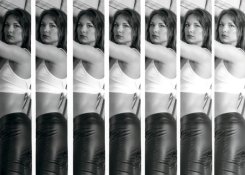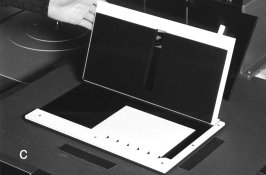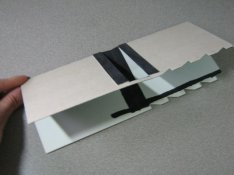...is banning the test strip an illusion?
Darkroom Automation never made that particular claim, but: Test strips will always be with us and f-stop timers are wizards at making test strips. The results of the test strips - in stops relative to a base exposure - fit right into the timer's dodging and burning schemes.
Adding a meter or metering facility lets you reduce the number of test strips so that the test strips you do make are very targeted to fine-tuning the image.
Metering's advantages are:
- Quickly arrive at a base exposure and paper contrast;
- Base that contrast on measurement of the focus point of the image - facial highlights and shadows for a portrait, midtones and deep shadows for a low-key subject, midtones and highlights for a high-key subject, etc., etc.;
- Accurately determine the dodges and burns needed to get from a first work print to a well-tuned final print, and do so in minimum time.
A meter may not be all that useful if your images are made under well controlled conditions, you use well known materials and processes, and you can accurately guess the exposure and contrast by looking at the image on the easel. But then you probably don't need to make many test strips or test prints anyway.
A meter makes a great deal of sense if you take pictures of a wide range of subjects, under very variable (and often very rushed (many of your best images are over/under/exposed/developed)) conditions, use a wide variety of materials and are sick of making test strips. With the rising price of paper a meter can pay for itself quickly by reducing waste.
A meter is not a magic bullet, no more than an exposure meter is guarantee of perfect negatives. You will still find yourself making test strips and prints, just as you find yourself bracketing a metered shot. But you will need fewer test prints to get to your final print, just as an exposure meter greatly reduces the need to bracket to get a good negative. These days nobody few would think to go in the field without an exposure meter, in the future the idea of printing without a darkroom meter will seem just as quaint.
Modern offerings have nothing in common with the past. Darkroom meters have a bad reputation to live down, and rightly so. Everyone has an old Analite or Spot-O-Matic they have played around with and ultimately relegated to the odd-bits-box. The technology to make a meter with the required accuracy - 1/100th of a stop - at a reasonable consumer price has only come available in the past 10 years or so. 1/100th of a stop may seem like overkill, but if you are setting print exposure to 1/10th of a stop you do need to measure to a much higher resolution. 1/10th of a stop may also seem like overkill but it is a 2 second adjustment to a 25 second exposure - something we have all made, especially with higher contrast grades of printing paper.
A darkroom meter has a learning curve. Like all bits of electronics it slavishly does what it is told. And there's the rub: you have to know what tone to assign to each metered area. If you are an experienced printer you likely already have this bit of pre-visualization skill. The zone-strip, described in the Darkroom Automation
application note, can be a great help with pre-visualization in the darkroom.
I wish I could advise you to get a
Darkroom Automation system, but I am afraid, if you want a meter/timer system, I will have to refer you to the competition -
RH Designs (change all decimal stops in the missive above to twelfths). DA does not make a timer for the European market. The DA stand-alone meter is available world-wide.















